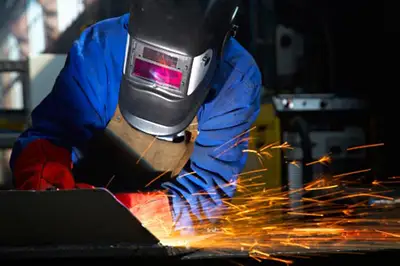We check every report that our assessors write for two reasons:
- To ensure that it is grammatically correct, consistent and clear to the reader
- Validation by a qualified fire risk assessor to ensure the recommendations are in line with the guidance and legislation.
When doing this, we also learn a lot about what should be in a fire risk assessment report and the issues that are raised. It also gives us the opportunity to check our report format; is it clear, does it make sense and on this particular occasion…..why do we ask this?
Why do we ask about oxygen?
The question that prompted us to question why we ask about oxygen was “Are there any additional oxygen sources that are potential fire hazards?”. If the assessor answers “yes”, they can then detail what these sources are:
- Chemicals

- Cutting
- Medical services
- Oxygen cylinders
- Piped oxygen distribution systems
- Welding
This still doesn’t really explain why you need to know, so there is some text in the report which reads: “The main source of oxygen for a fire is the air around us. In addition, materials stored on the premises, such as chemicals (oxidizing materials), can provide a fire with extra oxygen. These chemicals should be identified on the container by the manufacturer”. While this gives a bit of an overview, it really isn’t that clear, so it required further investigation.
Remember the Fire Triangle?
Think back to science lessons at school; do you remember the Fire Triangle? This symbol details the three components needed to ignite and sustain a fire. The three elements are:
- heat

- fuel
- oxygen
This goes some way to understanding why higher levels of oxygen in a premises need to be both signposted and managed. Then there are the sources that the assessor can list. Why are they important?
Firstly there are the obvious ones, oxygen cylinders/medical services/piped oxygen distribution systems; these are all sources of pure oxygen. Then there is cutting & welding; both these processes can use oxygen gas, mainly in the metal industry.
Then finally… and this was the one that highlighted the need for more information, is the source of the chemical. The National Fire Chiefs Council (NFCC) has full details of the types of chemicals (oxidizing materials) to be aware of and how to control them. It is also clearer about the two different types of Oxidizers:
- Oxidizing substances – if they aren’t contained correctly, could combine with organic materials and cause a fire.
- Organic peroxides are more hazardous as they are already made up of oxygen and an organic source and therefore only need one more element of the fire triangle (heat) to start a fire.
Updating the report
Of course, we can’t put all of the text from the NFCC in our report, but what we can do is make it clearer why it has been highlighted, which is why our reports now say the following:
Oxygen is one of the three components needed to ignite and sustain a fire (Fire triangle). The main source of oxygen is the air around us; however, the assessor has identified processes and/or materials stored on the premises, which can provide a fire with extra oxygen.
The Responsible Person must ensure that all occupants are aware of the hazards of additional oxygen and ensure that it is included in any Health & Safety risk assessment according to the oxygen use in the workplace guidance issued by HSE, carried out at the premises. Any Oxidising materials (chemicals) should be identified on the container by the manufacturer. The source list has also been updated to change chemicals to oxidising materials.
Hopefully, this change to the report gives a much clearer understanding of why highlighting additional oxygen sources can benefit the Responsible Person, who can then, in turn, ensure that anyone handling and storing the sources understands the associated hazards.


